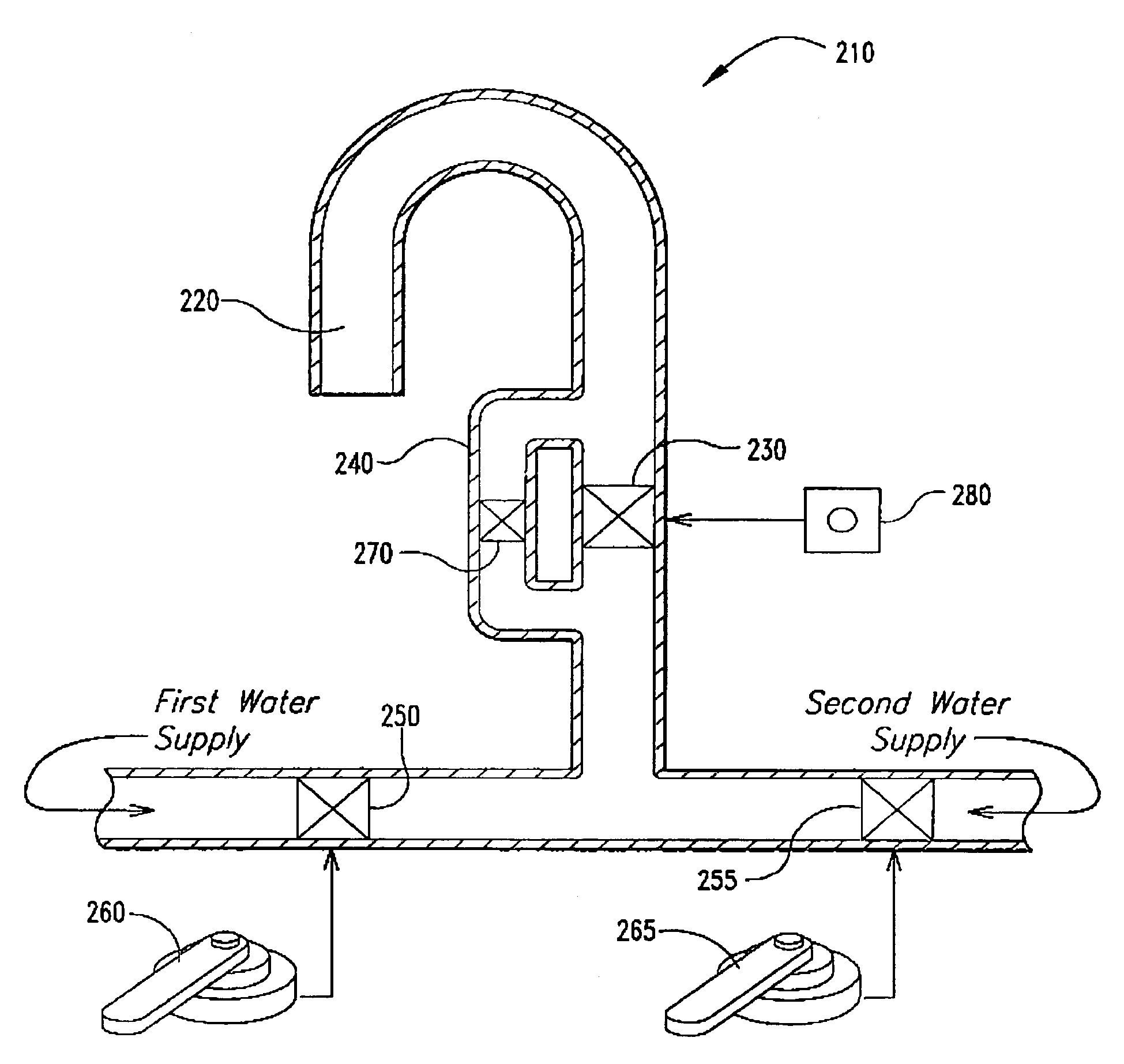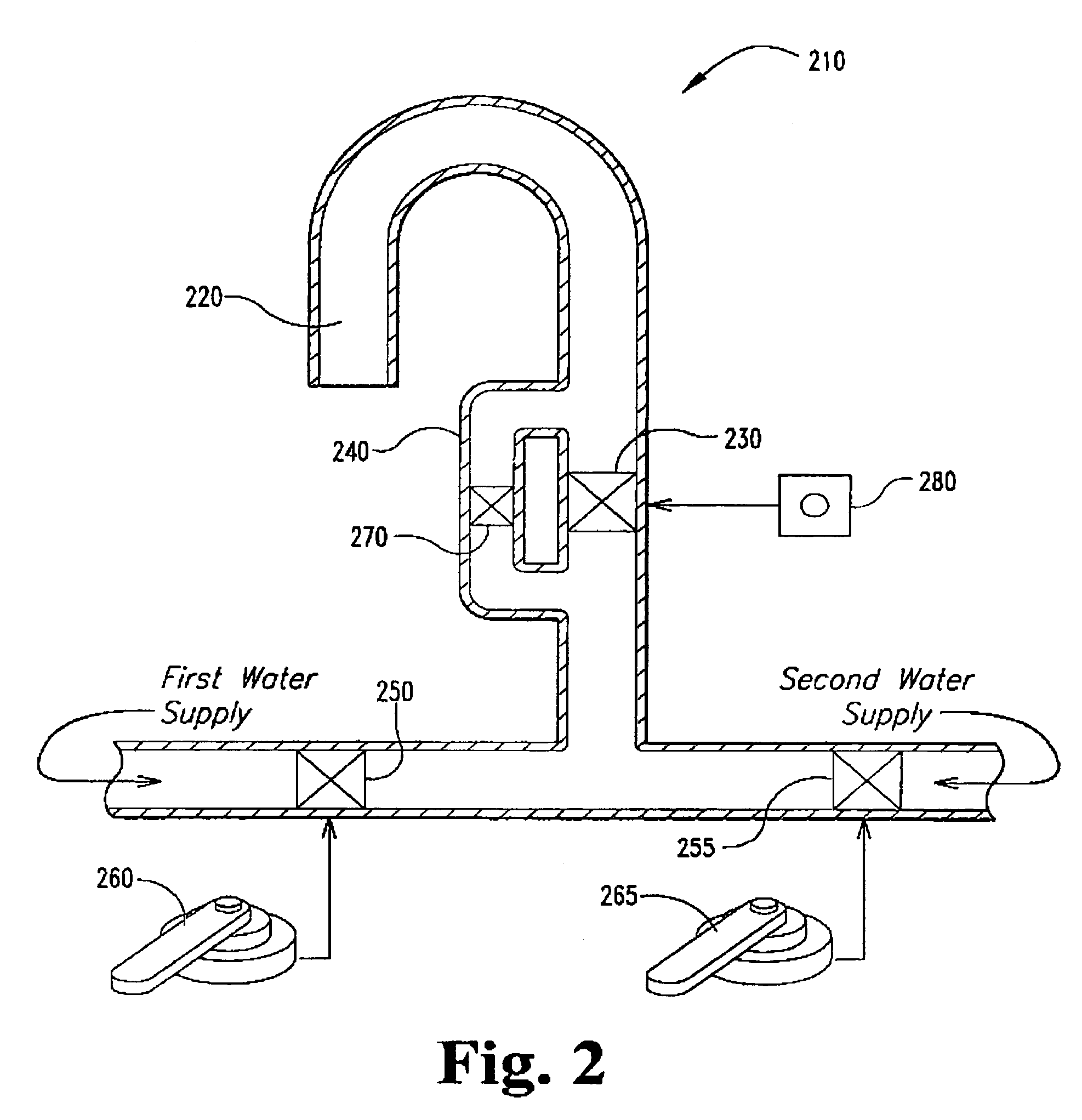Restricted flow hands-free faucet
a technology of restricted flow and faucet, applied in the direction of fluid pressure control, process and machine control, instruments, etc., can solve the problems of inadvertent activation of water flow, inability to guarantee mechanical reliability, and inability to control the flow of water in a controlled manner
- Summary
- Abstract
- Description
- Claims
- Application Information
AI Technical Summary
Benefits of technology
Problems solved by technology
Method used
Image
Examples
Embodiment Construction
[0019]For the purposes of promoting an understanding of the principles of the invention, reference will now be made to the preferred embodiment and specific language will be used to describe the same. It will nevertheless be understood that no limitation of the scope of the invention is thereby intended. Such alternations to and further modifications of the invention, and such further applications of the principles of the invention as described herein as would normally occur to one skilled in the art to which the invention pertains, are contemplated, and desired to be protected.
[0020]A preferred embodiment automatic faucet according to the present invention provides conspicuous and intuitively obvious visual feedback that alerts even users unfamiliar with the operation of automatic faucets when the faucet is in an automatic off state, rather than a manual off (shut down) state. In the preferred embodiment, an automatic faucet according to the present invention uses a third, restrict...
PUM
 Login to View More
Login to View More Abstract
Description
Claims
Application Information
 Login to View More
Login to View More - R&D
- Intellectual Property
- Life Sciences
- Materials
- Tech Scout
- Unparalleled Data Quality
- Higher Quality Content
- 60% Fewer Hallucinations
Browse by: Latest US Patents, China's latest patents, Technical Efficacy Thesaurus, Application Domain, Technology Topic, Popular Technical Reports.
© 2025 PatSnap. All rights reserved.Legal|Privacy policy|Modern Slavery Act Transparency Statement|Sitemap|About US| Contact US: help@patsnap.com



